TL;DR
The compiler considers that FileNotFoundException() may not be the only Exception thrown.
Explaination
JLS§11.2.3 Exception Checking
A Java compiler is encouraged to issue a warning if a catch clause can
catch (§11.2) checked exception class E1 and the try block
corresponding to the catch clause can throw checked exception class
E2, a subclass of E1, and a preceding catch clause of the immediately
enclosing try statement can catch checked exception class E3 where E2
<: E3 <: E1.
That means that if the compiler considers that the only exception possibly thrown by your catch block is a FileNotFoundException(), it will warn you about your second catch block. Which is not the case here.
However, the following code
try{
throw new FileNotFoundException();
} catch (FileNotFoundException e){
e.printStackTrace();
} catch (IOException e){ // The compiler warns that all the Exceptions possibly
// catched by IOException are already catched even though
// an IOException is not necessarily a FNFException
e.printStackTrace();
} catch (Exception e){
e.printStackTrace();
}
This happens because the compiler evaluates the try block to determine which exceptions has the possibility to be thrown.
As the compiler does not warn us on Èxception e, it considers that other exceptions may be thrown (e.g RunTimeException). Since it is not the compiler's work to handle those RunTimeExceptions, it lets it slip.
Rest of the answer is intersting to read to understand the mechanism behind exception-catching.
Schema
As you may see, Exception is high in the hierarchy so it has to be declared last after IOException that is lower in the hierarchy.

Example
Imagine having an IOException thrown. As it is inherited from Exception, we can say IOException IS-A Exception and so, it will always be catched within the Exception block and the IOException block will be unreachable.
Real Life Example
Let's say, you're at a store and have to choose pants. The seller tells you that you have to try the pants from the largest ones to the smallest ones and if you find one that you can wear (even if it is not your size) you must take it.
You'll find yourself buying pants too large for your size and you'll not have the chance to find the pants that fits you.
You go to another store : there, you have the exact opposite happening. You can choose your pants from smallest to largest and if you find one you can wear, you must take it.
You'll find yourself buying pants at your exact size.
That's a little analogy, a bit odd but it speaks for itself.
Since Java 7, you have the option to include all the types of Exceptions possibly thrown by your try block inside one and only catch block.
WARNING : You also have to respect the hierarchy, but this time, from left to right.
In your case, it would be
try{
//doStuff
}catch(IOException | Exception e){
e.printStackTrace();
}
The following example, which is valid in Java SE 7 and later,
eliminates the duplicated code:
catch (IOException|SQLException ex) {
logger.log(ex);
throw ex;
}
The catch clause specifies the types of exceptions that the block can
handle, and each exception type is separated with a vertical bar (|).
